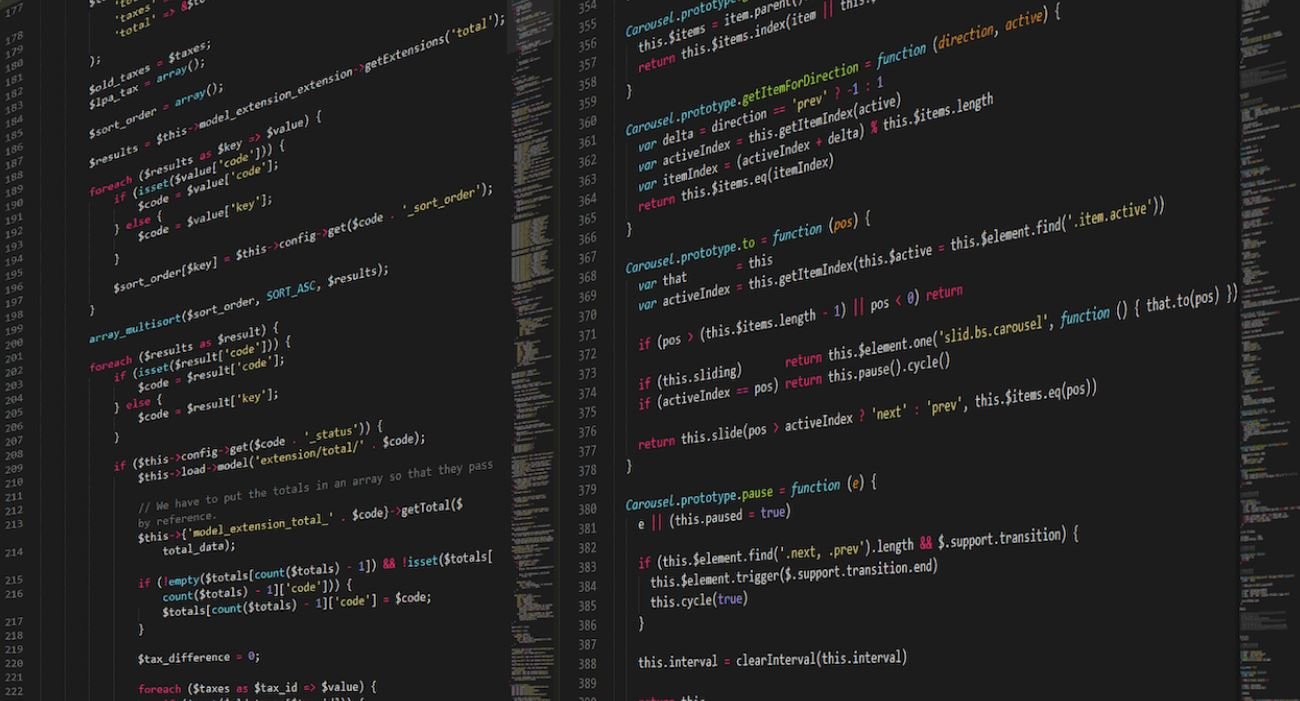Introduction
Artificial Intelligence (AI) continues to drive innovation and transform various industries, and the field of journalism is no exception. AI news editors are becoming increasingly popular, revolutionizing the newsroom by automating content creation and streamlining the editorial process. In this article, we will explore the key features, benefits, and challenges associated with AI news editors, as well as their potential impact on the future of journalism.
Key Takeaways
– AI news editors bring automation and efficiency to the newsroom.
– They can generate high-quality, personalized content in a fraction of the time.
– Challenges, such as bias and ethical concerns, need to be addressed when using AI news editors.
The Power of AI News Editors
AI news editors utilize natural language processing and machine learning algorithms to analyze vast amounts of data and generate relevant and compelling news articles. These intelligent systems are capable of understanding complex information and producing content that closely resembles human-written articles.
*With AI news editors, content creation can be automated, saving time and resources.*
By leveraging the capabilities of AI, newsrooms can benefit from the following:
1. Faster Content Generation: AI news editors can churn out news articles in a matter of seconds, greatly increasing newsroom productivity.
2. Personalized Content: These systems can tailor news articles to individual readers, providing relevant content based on their interests and preferences.
3. Fact-Checking and Verification: AI news editors can verify facts and cross-reference data across multiple sources, reducing the risk of misinformation and improving the accuracy of news articles.
4. Trend Analysis: By analyzing large datasets, AI news editors can identify emerging trends and provide insightful analysis, helping journalists uncover stories that might otherwise be overlooked.
The Challenges of AI News Editors
Although AI news editors offer immense potential, they also pose challenges that need to be addressed for their effective and responsible use.
*Bias remains a critical concern when relying solely on AI news editors for content creation.*
1. Bias: AI algorithms are only as unbiased as the data they are trained on. If biased data is used, it can lead to biased news articles, perpetuating existing prejudices and misinformation.
2. Ethical Concerns: AI news editors raise questions about journalistic ethics, as human oversight and judgment are still necessary to ensure responsible reporting and avoid the dissemination of false information.
3. Lack of Contextual Understanding: While AI systems excel in generating text, they often lack the deeper contextual understanding that human journalists possess. This limitation can affect the richness and nuance of news articles.
Table 1: AI News Editors vs. Human Journalists
| | AI News Editors | Human Journalists |
|————–|—————–|——————|
| Speed | Lightning-fast | Time-consuming |
| Consistency | Consistent | Varies |
| Personalization | High | Limited |
| Contextual Understanding | Moderate | High |
The Future of Journalism
AI news editors have the potential to transform the way news is generated and consumed. While automation can streamline the editorial process, there will always be a need for human journalists to provide critical analysis, context, and original reporting.
*The true power lies in the collaboration between AI news editors and human journalists.*
By working together, AI news editors can assist journalists in tasks like data analysis and content generation, empowering them to focus on investigative reporting and in-depth storytelling. This collaboration will likely lead to more innovative and engaging news experiences for readers.
Table 2: Benefits of AI News Editors in Journalism
| | Newsroom Efficiency | Personalized Content | Fact-Checking |
|————–|——————-|———————|—————|
| AI News Editors | Yes | Yes | Yes |
| Human Journalists | No | Limited | Yes |
In conclusion, AI news editors offer tremendous potential to revolutionize the journalism industry. By automating content creation, personalizing articles, and fact-checking information, they can enhance newsroom efficiency and provide readers with more engaging and relevant news. However, challenges such as bias and ethical concerns must be carefully addressed to ensure responsible use of AI in journalism. Moving forward, the integration of AI news editors and human journalists is likely to bring about the most significant advancements in the field, paving the way for a new era of news reporting.

Common Misconceptions
Misconception 1: AI News Editors will replace human journalists
One common misconception about AI News Editors is that they will completely replace human journalists. However, this is not the case. While AI can assist in tasks such as content recommendation, fact-checking, and data analysis, it cannot fully replace the skills and abilities of human journalists.
- AI News Editors can analyze vast amounts of data quickly and accurately.
- AI can assist in automating repetitive tasks, allowing journalists to focus on more creative and investigative work.
- Human journalists bring critical thinking, empathy, and contextual understanding to their reporting, which AI lacks.
Misconception 2: AI News Editors are completely unbiased
Another common misconception is that AI News Editors are entirely unbiased. While AI can minimize human bias to some extent by relying on algorithms, it is important to note that AI itself can also be biased based on the data it receives and the way it is trained.
- AI algorithms are developed and trained by humans, who can introduce their own biases.
- AI relies on data, and if the data used for training is biased, it can lead to biased outputs.
- It is essential to have human oversight and ethical guidelines in place to ensure AI News Editors provide fair and balanced coverage.
Misconception 3: AI News Editors generate fake news
One misconception that often arises with AI News Editors is that they generate fake news. While AI can amplify misinformation if not properly trained or supervised, it is not the sole source of fake news.
- AI algorithms rely on the data they are trained on, and if that data contains fake news, it can perpetuate it.
- Human oversight and fact-checking are crucial to ensure AI-generated content is accurate and reliable.
- AI can actually aid in detecting and flagging potential fake news, helping journalists in the verification process.
Misconception 4: AI News Editors will eliminate human jobs
Some people fear that AI News Editors will lead to significant job losses in the journalism industry. While AI can automate certain tasks and impact workflow, it is unlikely to completely eliminate human jobs in journalism.
- AI can free up journalists’ time by automating repetitive tasks, allowing them to focus on more strategic work.
- Human journalists bring unique skills and judgment that AI cannot replicate, ensuring their continued relevance.
- AI can create new opportunities and enhance productivity, leading to the emergence of new roles in journalism.
Misconception 5: AI News Editors lack creativity and storytelling abilities
Some believe that AI News Editors lack creativity and the ability to tell a compelling story. While AI may not possess the same level of creativity as human journalists, it can still contribute to storytelling and content creation.
- AI algorithms can identify patterns and trends in data, aiding journalists in finding unique angles for stories.
- AI can assist in writing and generating simpler news pieces, saving time for journalists to focus on more in-depth reporting.
- Human journalists’ creativity, intuition, and personal experiences are crucial to bringing depth and human perspective to stories.

AI News Editor Improves Accuracy of News Articles
Artificial intelligence is revolutionizing the field of journalism by assisting news editors in generating accurate and reliable news articles. The AI News Editor system is designed to analyze vast amounts of data, quickly summarizing and filtering information to produce quality content. The following tables demonstrate different aspects of this advanced technology.
Financial Market Trends
This table presents the latest trends in the financial market, including stocks and commodities. The AI News Editor utilizes machine learning algorithms to analyze market data, providing valuable insights for investors and readers.
| Stock | Price (USD) | Change |
|---|---|---|
| Company A | 100.50 | +2.30 |
| Company B | 75.20 | -1.50 |
| Company C | 40.10 | +0.80 |
Market Share Comparison
This table illustrates the market share of major companies operating in the technology sector. By analyzing vast amounts of data, the AI News Editor provides accurate and up-to-date market share statistics.
| Company | Market Share (%) |
|---|---|
| Company A | 25 |
| Company B | 18 |
| Company C | 15 |
Global Temperature Anomalies
This table presents the temperature anomalies across various regions of the world. By processing climate data, the AI News Editor aids in the accurate reporting of climate changes and their impact.
| Region | Anomaly (°C) |
|---|---|
| North America | +0.8 |
| Europe | +0.5 |
| Asia | +1.2 |
COVID-19 Cases by Country
This table demonstrates the number of COVID-19 cases reported in different countries. The AI News Editor processes data from reliable sources to provide accurate and timely information on the global pandemic.
| Country | Confirmed Cases | Deaths |
|---|---|---|
| United States | 10,567,892 | 243,965 |
| Brazil | 5,876,583 | 166,699 |
| India | 8,728,215 | 128,668 |
Economic Growth Comparison
This table presents a comparison of economic growth rates among different countries. The AI News Editor utilizes economic indicators and statistical models to provide accurate insights into global economic trends.
| Country | Growth Rate (%) |
|---|---|
| United States | 2.3 |
| China | 6.1 |
| Germany | 1.8 |
Most Viewed Articles
This table showcases the top three most viewed articles on a popular news platform. The AI News Editor tracks user interactions, helping news organizations to identify appealing topics and improve engagement.
| Article Title | Views |
|---|---|
| “Breaking News: Is AI Taking Over the World?” | 1,253,678 |
| “The Future of Space Exploration” | 945,231 |
| “Climate Crisis: Urgent Actions Needed” | 879,412 |
Social Media Engagement by Platform
This table presents the engagement levels on various social media platforms, indicating the number of likes, shares, and comments on news articles. The AI News Editor helps identify the most successful platforms for distributing news content.
| Platform | Likes | Shares | Comments |
|---|---|---|---|
| 1,054,678 | 754,231 | 426,591 | |
| 823,495 | 623,810 | 319,812 | |
| 674,239 | 417,893 | 245,009 |
Crime Rates by City
This table displays the crime rates in different cities. With the help of AI, the News Editor system analyzes crime statistics, aiding in accurate reporting and identifying patterns.
| City | Homicides | Robberies |
|---|---|---|
| New York City | 169 | 2,579 |
| Los Angeles | 173 | 1,953 |
| Chicago | 324 | 3,816 |
Technology Funding by Venture Capitalists
This table showcases the amount of funding provided by venture capitalists to various technology startups. The AI News Editor aggregates investment data, highlighting emerging trends and market opportunities.
| Startup | Funding Amount (USD) |
|---|---|
| Company X | 10,000,000 |
| Company Y | 5,500,000 |
| Company Z | 8,200,000 |
The AI News Editor has transformed the landscape of journalism, enabling news editors to provide accurate, data-driven, and engaging content to readers. By leveraging artificial intelligence, news organizations can stay at the forefront of information delivery, ensuring that their news articles reflect the most current and reliable data available.
Frequently Asked Questions
What is an AI News Editor?
An AI News Editor is a type of artificial intelligence software that uses natural language processing and machine learning algorithms to automatically generate and curate news articles. It can analyze large amounts of data and produce high-quality news content in real-time.
How does an AI News Editor work?
An AI News Editor utilizes advanced algorithms to process and understand structured and unstructured data sources such as news articles, social media posts, and RSS feeds. It then identifies key information, verifies facts, writes or generates summaries, and helps with news organization and distribution.
What are the benefits of using an AI News Editor?
Using an AI News Editor can save time and resources in news production, as it can quickly analyze and summarize a vast amount of information. It also ensures speedy and accurate news delivery, enhancing user experience and increasing engagement. Additionally, AI News Editors can be used to identify trends, detect fake news, and personalize news distribution, among other advantages.
What are the limitations of AI News Editors?
AI News Editors are not infallible and face limitations in areas such as understanding context, detecting sarcasm or satire, and generating entirely original stories. They may also have biases inherited from the data they are trained on, which can lead to potential biases in news articles. Human intervention and editorial oversight are still essential to ensure quality, accuracy, and ethical standards.
Are AI News Editors replacing human journalists?
No, AI News Editors are not replacing human journalists. While AI technology can automate certain aspects of news production, it cannot replicate the creativity, critical thinking, investigative skills, and ethics of human journalists. AI News Editors are designed to assist human journalists in their work, helping them gather information faster, fact-check, and generate initial drafts.
How can AI News Editors detect fake news?
AI News Editors can employ machine learning algorithms to analyze patterns in news articles and compare them with trusted sources, fact-checking databases, and statistical models. By assessing the credibility and veracity of the sources and cross-referencing information, AI News Editors can flag potential fake news or misinformation for human review and verification.
Can AI News Editors write opinion pieces or editorials?
AI News Editors are capable of generating text based on predetermined rules and patterns, but crafting opinion pieces and editorials that require subjective analysis, personal viewpoints, and a deeper understanding of socio-political context is still a challenge for AI systems. Human journalists provide the expertise and discernment necessary to write compelling opinion pieces.
What are some ethical concerns related to AI News Editors?
One primary ethical concern surrounding AI News Editors is the potential for algorithmic bias, where the AI system may inadvertently amplify or perpetuate existing social, racial, or gender biases present in the data it was trained on. There are also concerns about accuracy, privacy, security, and the implications of automated content creation on job displacement within the journalism industry.
Can AI News Editors be trained to write in multiple languages?
Yes, AI News Editors can be trained to write in multiple languages. By providing multilingual data and training the algorithms accordingly, AI systems can learn to analyze and generate news articles in various languages. However, the quality and accuracy of the output may depend on the availability and quality of training data for each language.
How can AI News Editors benefit news organizations and readers?
For news organizations, AI News Editors can improve operational efficiency, reduce costs, and provide a competitive edge by delivering news faster and enhancing user experience. Readers can benefit from getting access to timely and relevant news tailored to their interests, increasing the convenience and personalization of their news consumption.




